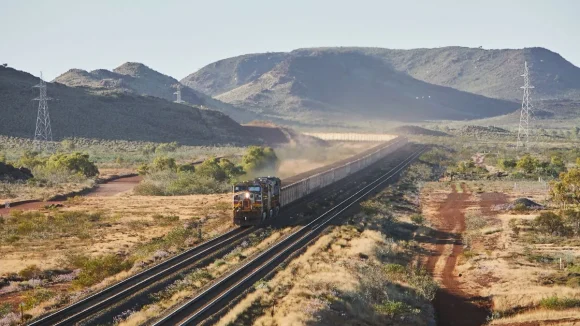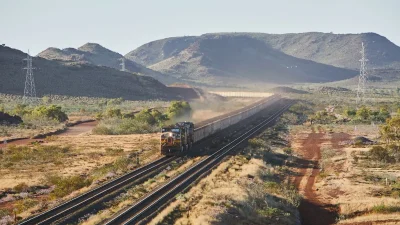Industries are hopping aboard the green transition train. The Rio Tinto Group is on track to reduce its carbon footprint by testing battery-powered locomotives – dubbed the world’s largest robots – in Australia.
The company’s autonomous behemoths span a staggering 2.5 kilometers (1.5 miles) and ferry iron ore across the barren stretches of the Australian Outback. Each train comprises 240 cars capable of transporting 28,000 tons of iron ore. This massive haul equates to over US$3.2 million worth of cargo.
Since 2018, the majority of the trips on Rio Tinto’s 1,900 km (1,180 miles) rail grid in Western Australia’s Pilbara region have been executed without human intervention.
A greener route
Rio Tinto acquired four FLXdrive battery-electric locomotives from Wabtec Corp in 2022, with production set to kick off in the US before preliminary trials begin in Pilbara by early 2024. These electric wonders house about 7.5 MWh of energy capacity, a tad lower compared to the 13 MWh housed by the existing diesel-driven fleet.
However, tackling the battery density problem remains a challenge. The specs require better density to keep these freight carriers efficient. Therefore, the trials aren’t just a test; it’s an exploration of battery use on trains, particularly in the harsh Pilbara terrain.
The trains will be operational by 2025, marking a departure from complete autonomy since these trains will require human drivers. The shift from diesel to electric power will reduce industrial pollution and align with the company’s ambitious goal to slash greenhouse gas emissions by half come 2030.
Beyond mining
The benefits of transitioning from diesel to electric extend beyond the mining sector to other industries, including the freight and delivery sector. Delivery companies can gain insights from these trials and explore the viability of electric trains to enhance sustainable logistics.
The switch from diesel to electric trains offers notable benefits. Especially in Australia, where logistics often navigate vast distances and challenging landscapes. It would reduce operational costs traditionally associated with diesel fuel, while also providing a safer alternative.
No direct emissions mean cleaner air and a reduced likelihood of accidents, as electric trains are equipped with advanced monitoring and control systems. Furthermore, the technological advancements needed to transition to electric train systems can drive innovation within the logistics sector.
This could lead to the development of new technologies, spurring economic growth and creating job opportunities. Electric trains also contribute to a more resilient and agile supply chain. This is crucial in a post-pandemic world where supply disruptions have become commonplace.
About the author
Cheryl has contributed to various international publications, with a fervor for data and technology. She explores the intersection of emerging tech trends with logistics, focusing on how digital innovations are reshaping industries on a global scale. When she's not dissecting the latest developments in AI-driven innovation and digital solutions, Cheryl can be found gaming, kickboxing, or navigating the novel niches of consumer gadgetry.











